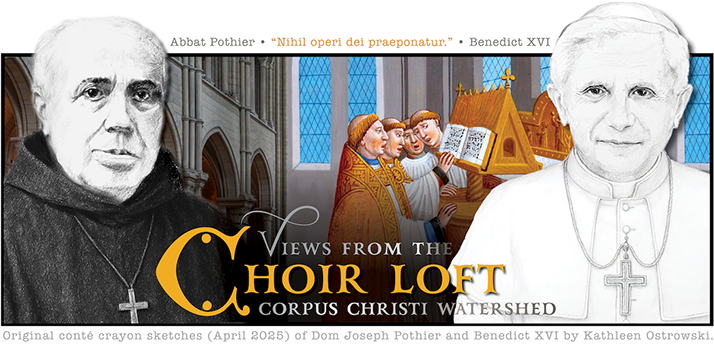 IKE EVERY OTHER human being on the planet, I’ve created things I’m not proud of. When I remember those items, I wince. At the same time, I have produced things of which I’m very proud … and an example would be my 2019 article: What Makes A “Catholic” Hymnal? Towards the end of that article, I demonstrated that it’s wrong to attribute the melody for “Véni Redémptor Géntium” (an Advent hymn) to Martin Luther. As a matter of fact, like many tunes Luther adopted, the melody was originally Roman Catholic. Perhaps people erroneously believe it to have non-Catholic origins because famous Protestant composers—such as the magnificent Johann Sebastian Bach—did wonderful things with that tune.
IKE EVERY OTHER human being on the planet, I’ve created things I’m not proud of. When I remember those items, I wince. At the same time, I have produced things of which I’m very proud … and an example would be my 2019 article: What Makes A “Catholic” Hymnal? Towards the end of that article, I demonstrated that it’s wrong to attribute the melody for “Véni Redémptor Géntium” (an Advent hymn) to Martin Luther. As a matter of fact, like many tunes Luther adopted, the melody was originally Roman Catholic. Perhaps people erroneously believe it to have non-Catholic origins because famous Protestant composers—such as the magnificent Johann Sebastian Bach—did wonderful things with that tune.
Advent Eucharistic Hymn • The Brébeuf Catholic Hymnal uses that famous Advent melody on page 145, setting a tremendous Eucharistic text by a Catholic Archbishop named John Peckham (d. 1292), who had studied with Saint Bonaventure:
![]()
No English? No Problem. • Some parishes don’t allow English songs. If you’re the choirmaster at one of those parishes, try this Latin version:
* PDF Download • “AVE, CORPUS DOMINI” (private edition)
—A Eucharistic Advent Hymn • Courtesy of the Saint John Brébeuf Hymnal.

Sensational Strategy • We have spoken in the past about common tunes, which are also known as “shared hymn tunes.” In essence, this was a technique perfected by priests and musicians who created the Brébeuf Hymnal. This sensational strategy makes it possible to get through the entire liturgical year even if the congregation only knows a handful of decent hymn tunes. Furthermore, it means your choir members get more “bang for their buck”—and that means you can spend more time working on things like phrasing, diction, and balance. (I don’t need to tell you how precious rehearsal time is!) The Advent tune we’ve been discussing—which is sometimes called “NUN KOMM, DER HEIDEN HEILAND”—appears four times in the Brébeuf Hymnal: (1) on page 145; (2) on page 190; (3) on page 516; (4) on page 874.
![]()
![]()


